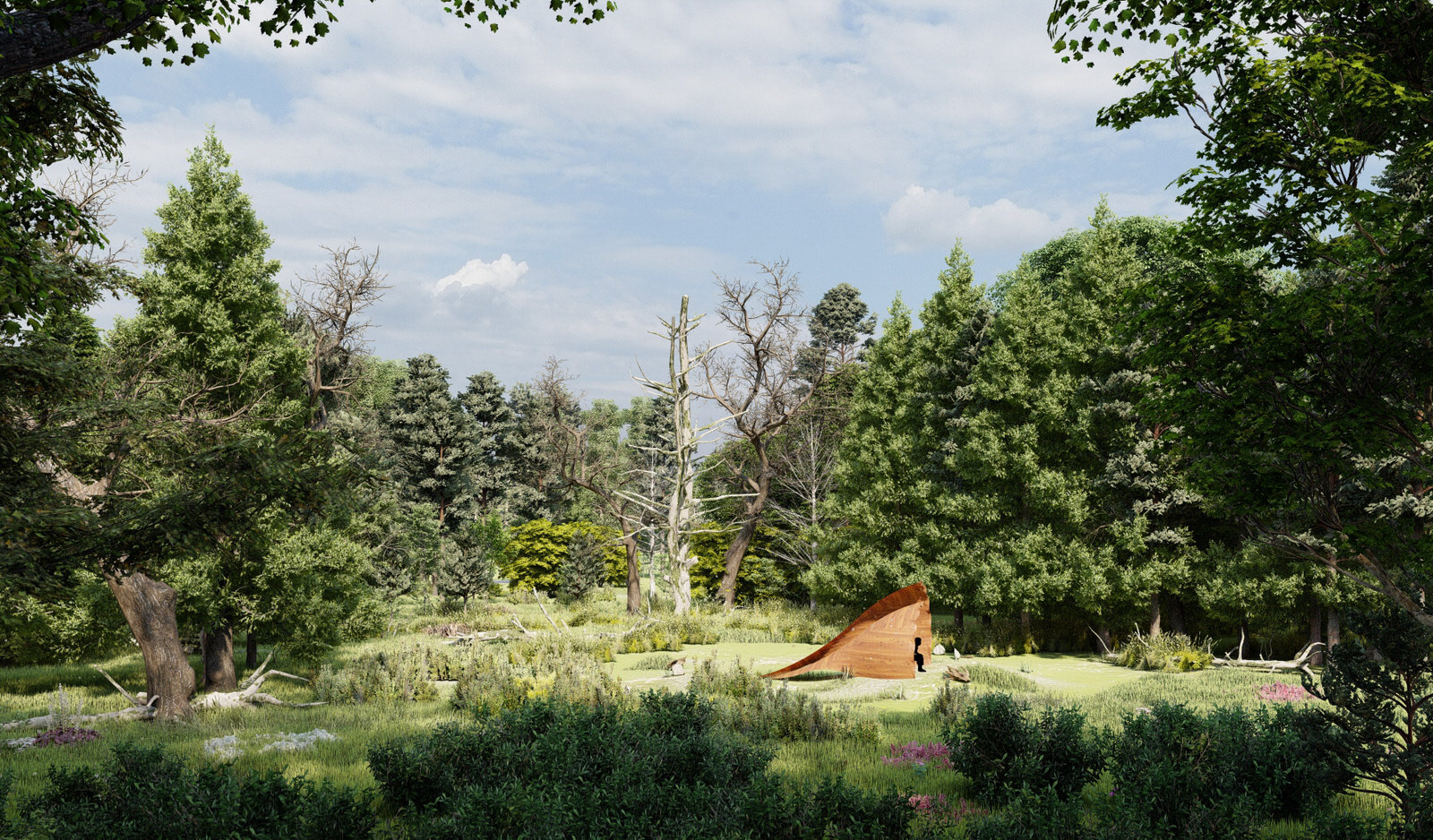Soundscape
Personal Project
Summer 2020
Sketchup, Lumion, Photoshop
How can sound change the way we interact with nature?
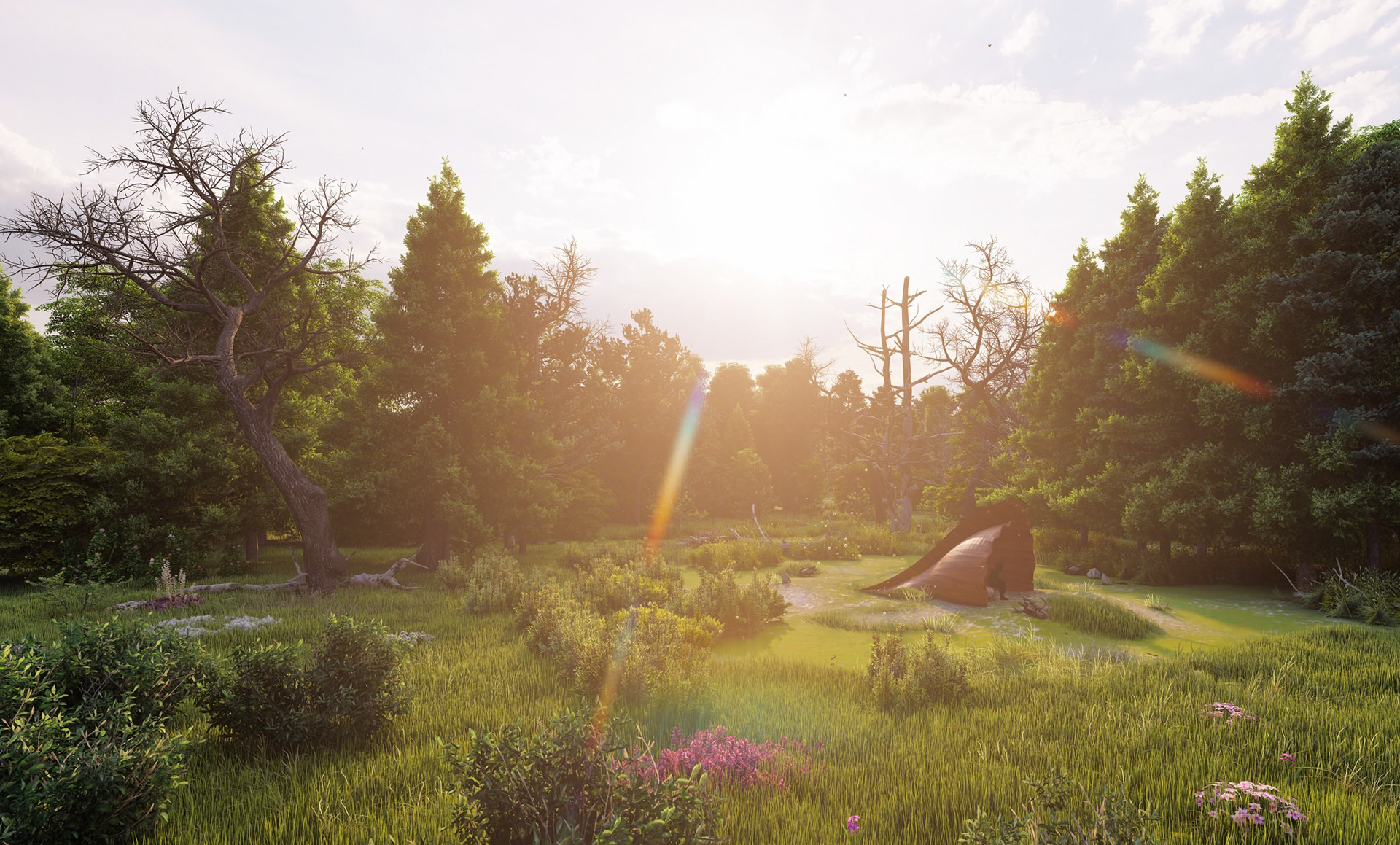
Canada, 2019.
Out in the backcountry, sight is the predominant sense that interacts with the surroundings. But once the sun sets, a new world emerges and sound replaces sight. While traveling, whenever I ventured out to photograph the stars, bears would be on my mind. Every few steps, I would freeze and try to make out the sounds around me — gripping my tripod a little harder just in case I needed to use it for protection. Even as I pointed my camera to the sky and began taking long exposures, I’d have one hand on a canister of bear spray and the other covering my mouth — desperately listening for the movements of the night. Those photographs and the desire to be able to hear during that moment inspired this space.
This structure collects and focuses the sounds of the surrounding landscape so that people can become more aware of the world around them. The placement and prominence of the structure serves to disrupt the conventional happenings of outdoor life and prepare people for experiencing a different world through sound.
I stood alone in the
darkness
holding my breath
every so often
to listen for bears that
roam
their territory at night.
All I heard was my
beating heart, that
drowned
out
the rustling behind me.
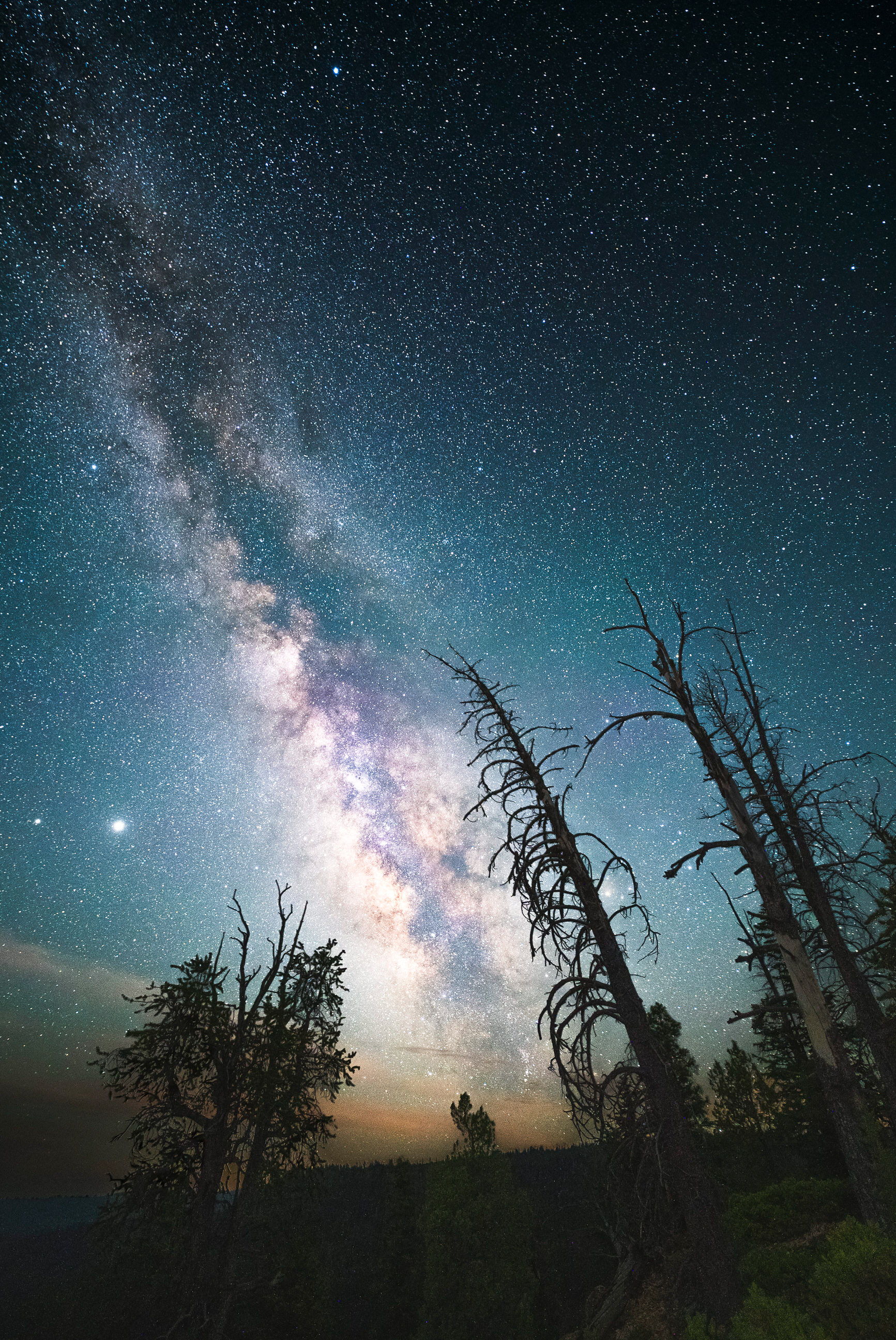
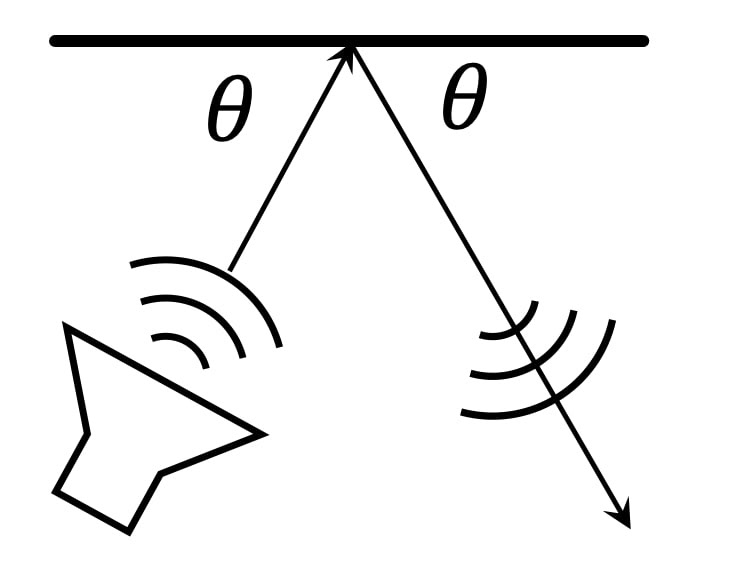

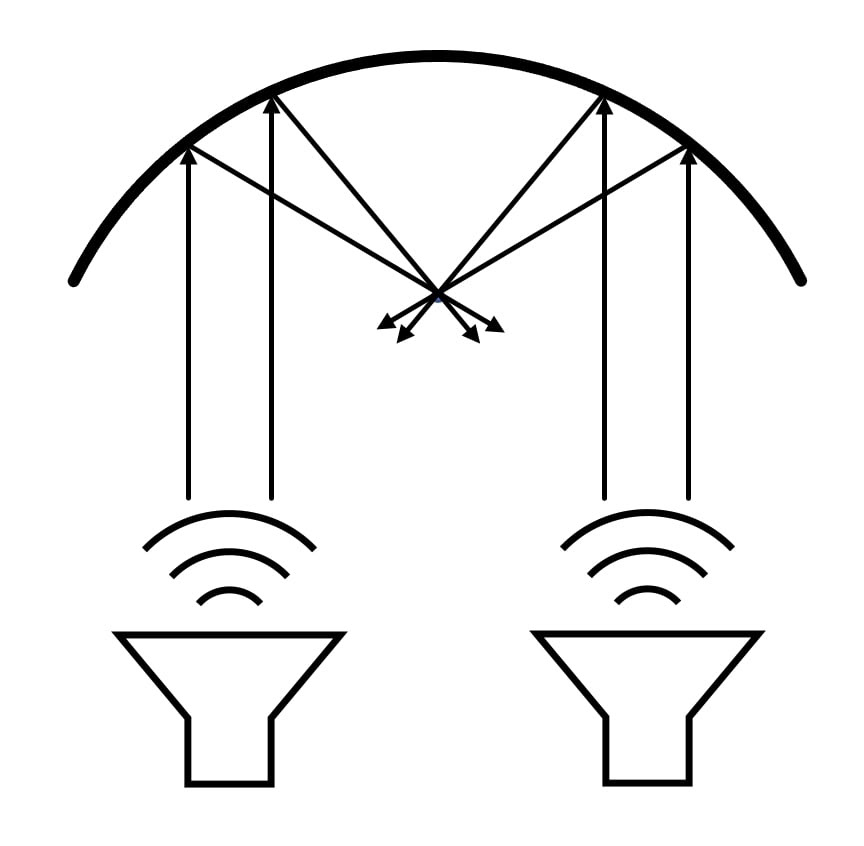
Sound acts like light, since it bounces off surfaces while preserving its incident angles. Depending on the curvature of the surface, sound can be focused or diffused.


The initial spread-out design would require structures that are tens of feet tall to avoid foliage obstruction. Since this would also promote off-trail explorations and disturb the ecosystem, the design shifted to a single-structure. The lone structure acts as both a sound collector and catalyst to increase one's receptiveness to the experience.
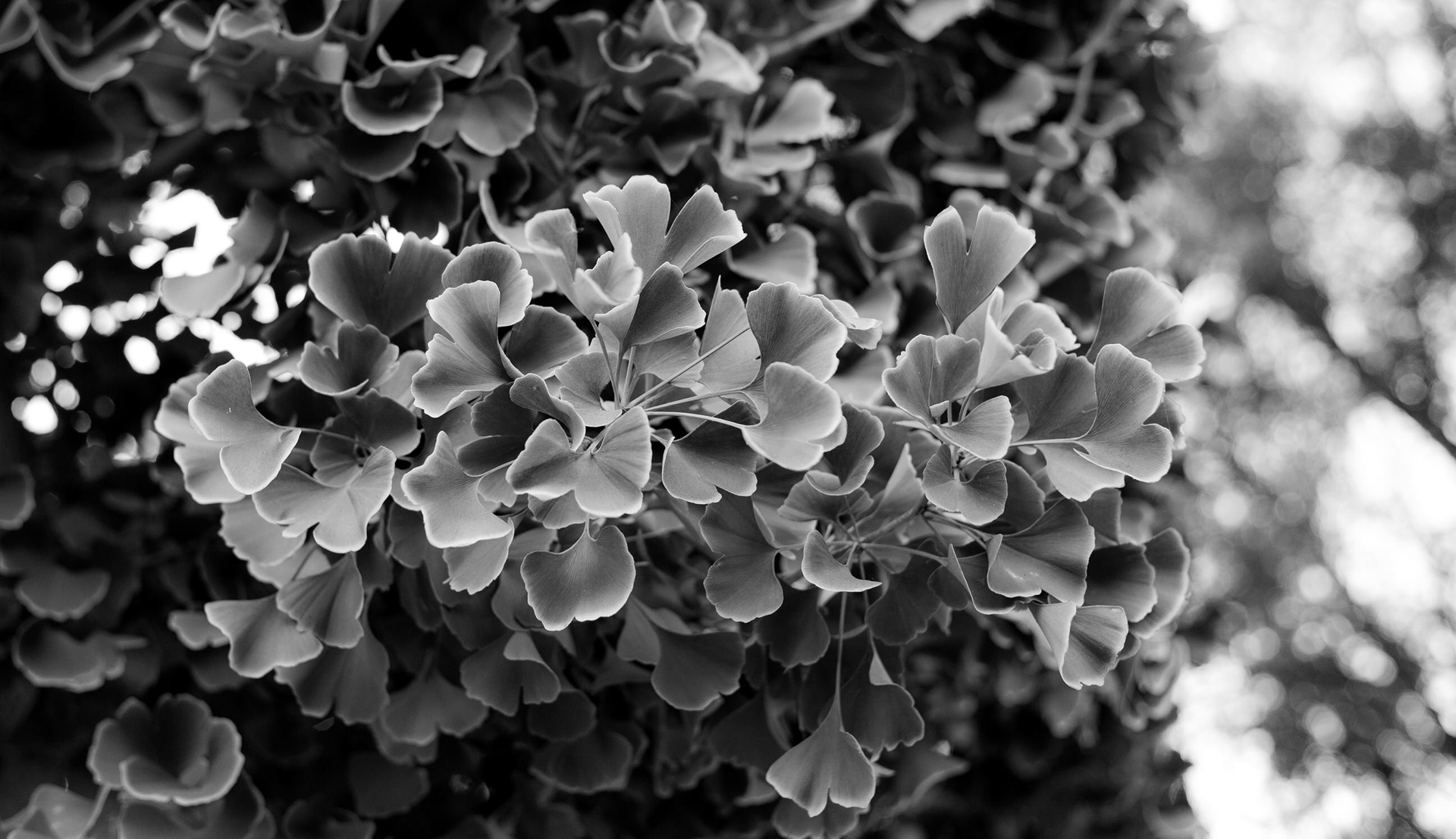
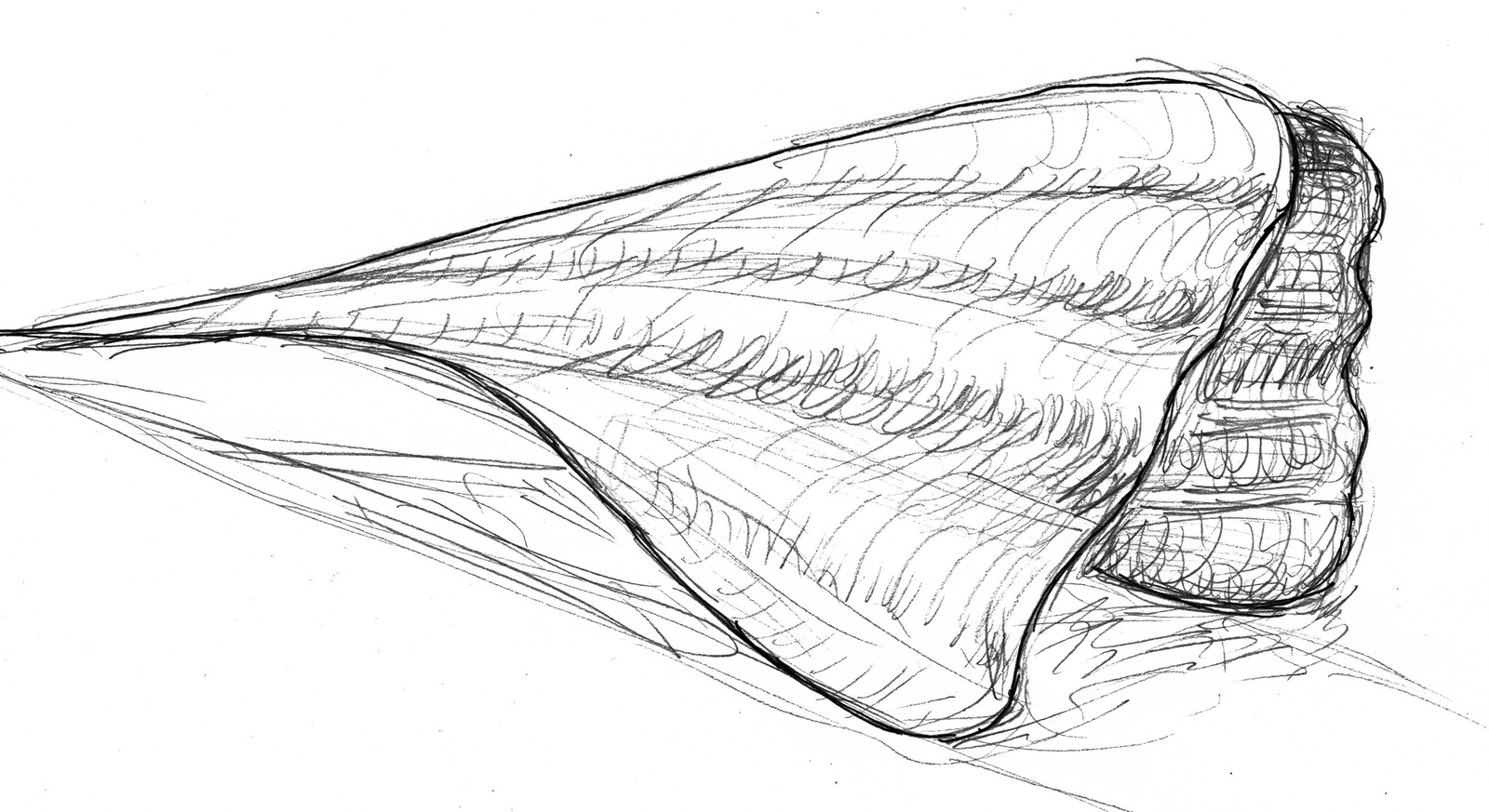
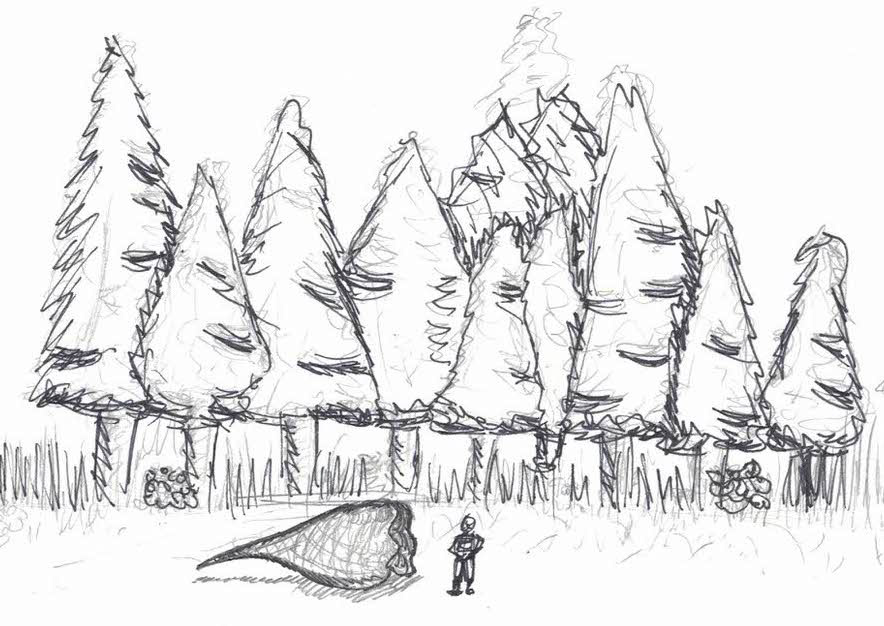
Ginkgo leaves that had fallen onto the sidewalk inspired the structure's shape. Its minimal, organic form doesn’t detract from the surrounding nature and the arch at the end allows light and air to flow through. In the final design, the two sides were separated and offset to allow light and sound from the entire length of the structure to be reflected into the space.

